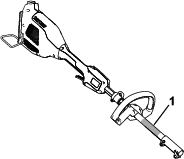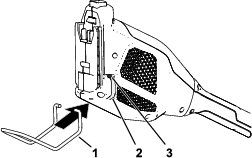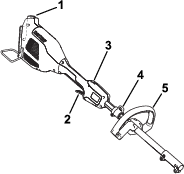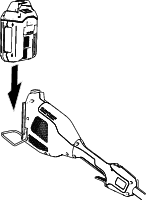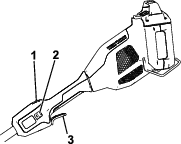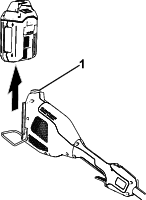This power head is intended to be used by residential homeowners
to power attachment tools. It is designed to be used only in combination
with Toro Flex-Force Power System 60V Max attachments. It is designed
to use Toro Flex-Force lithium-ion battery pack Models 88620, 88625,
88640, 88650, 88660, or 88675. These battery packs are designed to
be charged only by battery charger Models 88602, 88605, or 88610.
Using this product for purposes other than its intended use could
prove dangerous to you and bystanders.
Read this information carefully to learn how to operate and
maintain your product properly and to avoid injury and product damage.
You are responsible for operating the product properly and safely.
Visit www.Toro.com for product safety and operation training
materials, accessory information, help finding a dealer, or to register
your product.
Model 51810T does not include a battery or a charger.
Whenever you need service, genuine the manufacturer parts, or
additional information, contact an Authorized Service Dealer or the
manufacturer Customer Service and have the model and serial numbers
of your product ready. Figure 1 identifies the location of the model and serial numbers
on the product. Write the numbers in the space provided.
Important: With your mobile device, you can scan the QR code on the serial
number decal (if equipped) to access warranty, parts, and other product
information.
This manual identifies potential hazards and has safety messages
identified by the safety-alert symbol (Figure 2), which signals a hazard that
may cause serious injury or death if you do not follow the recommended
precautions.
This manual uses 2 words to highlight information. Important calls attention to special mechanical information
and Note emphasizes general information worthy
of special attention.
The Model 51810T Power Head is compatible with a variety of
Toro-approved attachments that, when combined, comply with specific
standards; see the following table for more detail.
| Combination | Power Head Model | Attachment Model | Standard |
| String Trimmer | 51810T | 88716 | Conforms to UL STD 82Certified to CSA STD C22.2
No. 147 |
| Edger | 51810T | 88710 | Conforms to UL STD 82Certified to CSA STD C22.2
No. 147 |
| Pole Saw | 51810T | 88714 | Conforms to UL STD 82Certified to CSA STD C22.2
No. 147 |
| Cultivator | 51810T | 88715 | Conforms to UL STD 82Certified to CSA STD C22.2
No. 147 |
| Hedge Trimmer | 51810T | 88713 | Conforms to UL STD 62841-4-2Certified to CSA
STD C22.2 62841-4-2 |
 |
For assistance, please see www.Toro.com/support
for instructional videos or contact 1-888-384-9939 before returning
this product.
|
Warning
CALIFORNIA
Proposition 65 Warning
The power cord on this product contains lead, a chemical known to the State of California to cause birth defects or other reproductive harm. Wash hands after handling.
Use of this product may cause exposure to chemicals known to the State of California to cause cancer, birth defects, or other reproductive harm.
